Your cart is empty
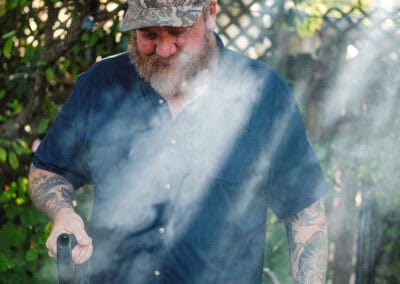

Around the same time that humans began domesticating the wild auroch in the Near East, glaciers from the last ice age were retreating from the Upper Midwest. Vast tracts were chiseled into the windswept landscape that is recognizable across the Dakotas, Minnesota, Iowa and Wisconsin. Roughly 24,000 square miles of land were left untouched by continental glaciers, leaving behind a tangle of bluffs, forested ravines, and fertile river valleys.
Agriculture in the Driftless region of Wisconsin has a fraught history. Wetlands have been filled in, streams rerouted, and forests clear-cut to make larger contiguous tillable acreage, first for wheat production, and more recently for corn and soy. Today, thankfully, there is a growing movement away from monocropping in this region and toward holistic grazing that utilizes the nuances of the landscape instead of fighting against them. The evolving traditions of multigenerational farmers are paving a way for the return of agriculture that mimics wild biological processes, not only improving our environment, but fostering a system that supports independent farmers and rural communities.
In an economic climate where our food system is shaped from the top down with federal subsidies incentivizing commodity grain production, we’re left with some big questions. Can farmers really make a living on grass-fed beef production? Can the grass-fed/grass-finished model produce enough beef for the American appetite? And there’s the more existential question: can regenerative agriculture help save us from ourselves?
Richard “Dick” Cates of Cates Family Farm in Spring Green, Wisconsin, is a pioneer in the small-scale agriculture movement that has been taking root in the Midwest. In this geologically unique region, coldwater streams emanate from springs in the cracks of the bedrock. There are no natural lakes in the entire Driftless area. The pattern of rising and falling water tables has been challenging crop farmers for decades. In the late 1980s, after attending a lecture about managed grazing, Dick and his family realized that their farm could be more productive with a system that worked with the contours of the land.
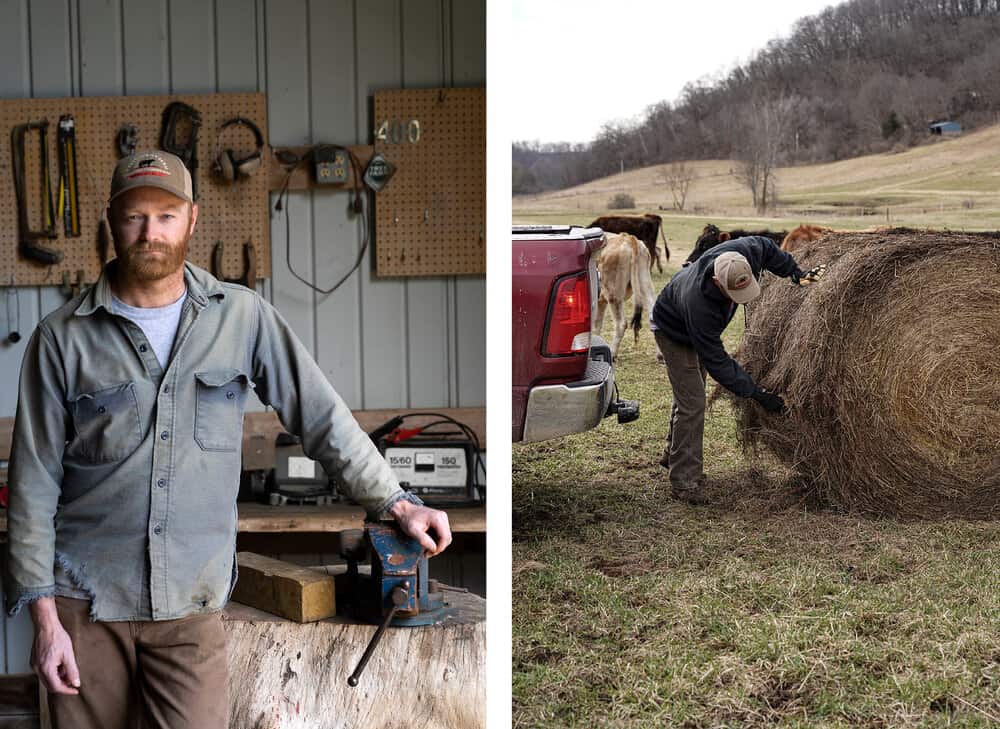
“We said, that’s what this farm needs. This land can grow grass, and through managed grazing it can grow even more grass on the same acreage. Over time we realized that this land used to be an extension of the Eastern Tallgrass Prairie; an oak savanna populated with grasses and oak trees. Wild ruminants helped keep the landscape open by grazing, with fire also playing a role as architect of the land. We realized that’s what this landscape was meant to do. It really wasn’t made for arable farming. It’s not a plowable farm. So, managed grazing has been a method that’s worked for the landscape,” Dick explains. The Cates 110-acre farm is divided into 35 paddocks, with herds rotated daily, allowing for each pasture to rest for four weeks so grass can re-establish.
The concept of holistic, planned grazing seems to contradict itself. If humans are supposed to let the herd dictate where they graze and when they want to move, then what is the farmer’s role in this system? Daniela Ibarra-Howell, CEO and Co-Founder of the Savory Institute, is a leader in the global movement to restore grassland ecosystems through holistic, managed grazing. She explains the importance of stress and recovery in grass ecosystems: “In what are called brittle environments with seasonal humidity, if plants don’t get grazed properly year after year, they become stagnant and they start accumulating plant material that becomes a liability to the plant. So those plants either produce below their potential, or they die off. If they are over-grazed, ruminants will eventually kill their roots.”
While this explains why it is important to manage when and where grazing livestock moves, we need to understand how nature facilitates these patterns in wild, self-managed scenarios. Dick Cates articulates how holistic planned grazing is a natural process, yet requires management. “This is a biomimicry of the way grasslands in any place on planet Earth are managed by the genetics of the large mammalian herbivores that graze those landscapes. They move in herds according to various pressures, whether that be drought, fire or predators. Grasslands across the globe have survived and thrived through that movement. So what we’re doing is mimicking that movement. Grasslands are a biome of movement. European agriculture took that movement out of the equation. When I talk about managed grazing, we’re trying to do what was done in nature on our grasslands. We don’t have the wolf or other predators which push the herd, but we can come and open a gate.”
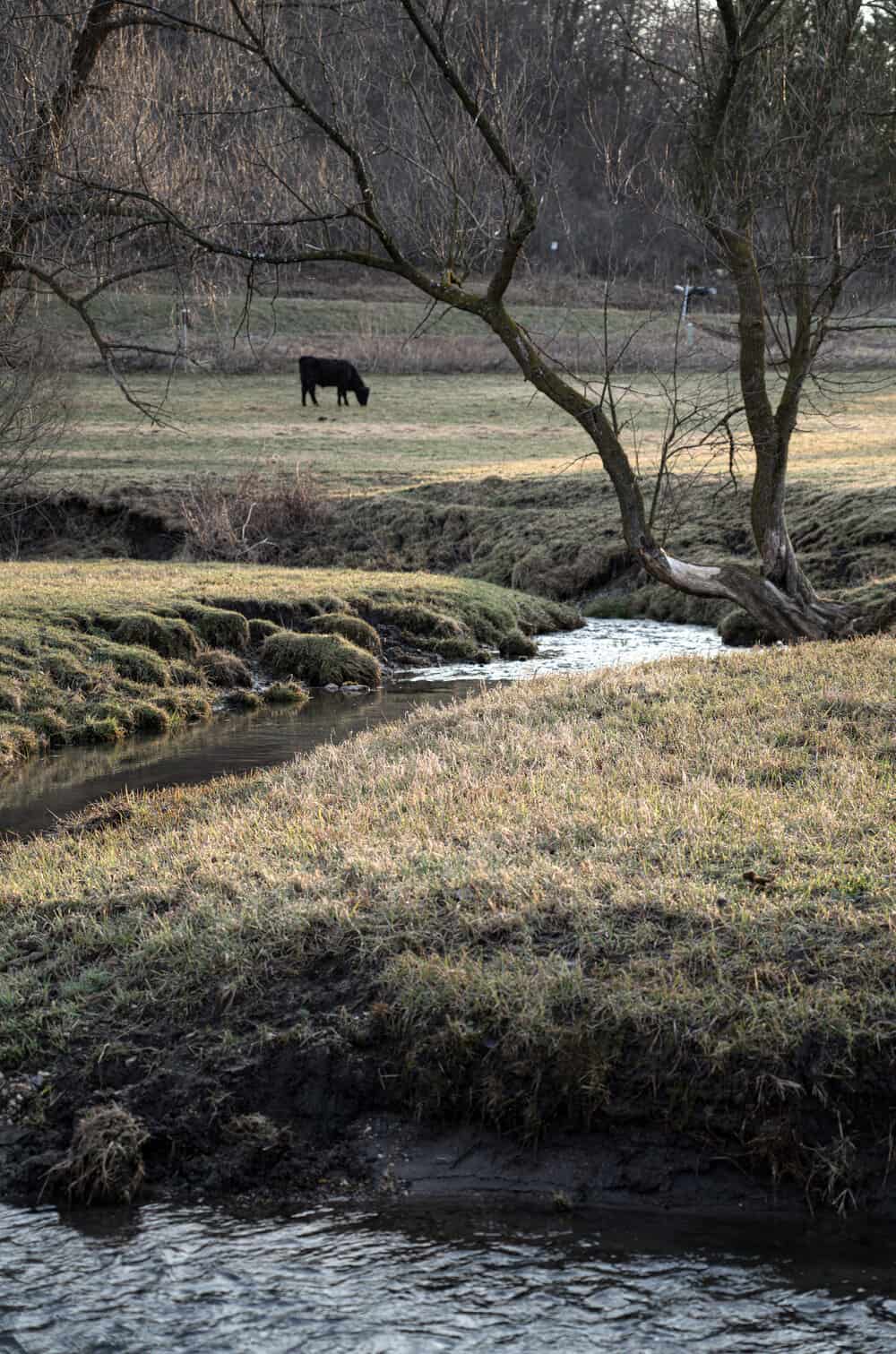
Human ingenuity has been trying to replace natural rhythms in our food production for centuries. If we pull back the curtain of biology, we can see webs so intricate that agronomists and food scientists are finally accepting their wisdom as laws of nature. With so much of our food production coming from systems that have been designed to strip away biological variables, it is daunting to imagine a return to diversity in a production-scale system. But this is the very work being done on holistically managed farms, small and large.
Margot Conover, EPIC Provisions’ Senior Sustainability Analyst, works with ranchers through supply chain facilitation and by supporting their operations via consumer outreach, so the farmers can focus on being productive while taking cues from the natural habitats in which the farms are located. “In any given place in the world, there’s never just one thing growing or living there. There are always many species layered on top of each other — plants, animals, fungi, infects, bacteria — all kinds of little creatures interconnected and doing a job within that ecosystem. I think that’s what’s really exciting about holistic management and biomimicry. It looks to ecosystems for guidance on how to structure the farm system. The farm is an ecosystem, and right now, in the dominant agricultural paradigm, farms are treated as factories where maybe you have two or three crop rotations, or all the animals are totally sequestered from any other species. You would never see that in nature at all.”
The realization that humans are a collaborative part of nature, and that we cannot slam our ecosystems into submission, is the great humbling lesson of our modern regenerative movement. This production philosophy can be applied to any micro-region, varying in implementation depending on the natural landscape.
Seven Seeds Farm, also in Spring Green, Wisconsin, was established in 1872 and has seen many faces of agriculture. With the strong tradition of a small, diversified dairy farm at its roots, Seven Seeds Farm followed a similar trajectory to the anthropogenic molding of the Midwest. As the viability of the family dairy operation fell out of favor for more profitable corn and soy production, many farmers sold their dairy herds, tilled over family gardens, and streamlined their time by removing hens, hogs, and open pollinated orchards. In the 1970s, Nixon-era Agriculture Secretary Earl Butz urged farmers to “get big or get out” and plant “fence row to fence row.” This commodity mindset dried up diversity on farms across the nation, and locked farmers into an input program of biocides, engineered proprietary seed, and fertilizers, often owned by singular, vertically integrated, multinational seed companies.
In 2007, Seven Seeds Farm began to transition their rolling ridgetop farm from a monocropped system into a regenerative operation, with several production channels bringing the farm simultaneous revenue streams while building the soil biome. Restoring perennial root systems to the windy ridgelines that cover this region has worked to hold topsoil in place. In heavily tilled fields across the Driftless, sandstone rock that sits beneath the surface has started to poke through, as though an ancient voice from the past is calling out with an ominous message. Sandstone formations date back 450 million years, to an era of vast seas that covered the region. These seas eventually retreated, creating layers of sediment. Over the millennia, flowing water carved rock faces, creating steep valleys and buttes, and topsoil formed through biomass accumulation, making this region rich in grasslands and forest. Margot Conover of EPIC Provisions explains that what took tens of thousands of years to create is being lost in a short period of time: “If you see naked soil when you’re driving through an agricultural area, just picture that 50 percent of topsoil on the planet has been lost in the past 250 years. We used to measure topsoil in feet; now we measure it in inches.”
Starting with 14 head of cattle in the first year, Seven Seeds has grown their herd to 170 Murray Gray cattle, 150 hogs, and 1,500 meat chickens and laying hens on roughly 500 acres of owned and rented pasture and tillable land. Seven Seeds Farm’s biodiverse system stacks multiple enterprises that work together to create more productivity. Michael Dolan, along with his wife, Chloe, is the 27-year-old owner and part of the seventh generation to care for this land. He says that multispecies pastures go beyond farm production. “Our chickens tend to follow the cattle when they’re on rotating pasture. They’re great at keeping the fly larva population down for cattle. There’s a lot of symbiotic relationships between these species on our farm, and they occur because of our diversity. In our culture now, food systems are very segregated and very confined. That’s the opposite of what we want to do on our farm.” Unraveling the biological partnerships that work together in nature has a dark side that presents in a cascading chain of consequences that are mitigated through more and more inputs.

We know that our great ruminants evolved to eat grass, so it’s important to understand why our food system has interrupted what ranchers, shepherds and hunters have always known. Savory Institute’s Ibarra-Howell shares the origin of our concentrated animal feeding operations (CAFO’s). “Grain surpluses caused by government price supports provided an opportunity for grain feeding to become a standard practice in the beef industry. That’s how it all started. Finishing (young) cattle were confined and fed grain, growth hormones, and other supplements to push their weight up as quickly as possible, along with antibiotics to keep them from getting sick — acidosis, for example, is a big issue. The result was a faster cycle and more consistent meat product, more like a factory, but it carried tons of unintended negative consequences for human health, animal health and welfare, and for the integrity of family farms, entire communities and the ecosystem. This artificial system for finishing cattle is designed around efficiencies of scale, not health of land, animals and people. It is fuel-based and it’s subsidized, and it carries a big carbon footprint.”
Ibarra-Howell’s work through the Savory Institute aims to disrupt this system through advocacy and education for farmers and consumers, as well as supply-chain innovations from grassroots producers up to corporate-level distribution. With the great riddle of whether American grasslands can support our nation’s beef consumption, Ibarra-Howell points to an analysis of USDA-sourced data on the hypothetical increase in nationwide stocking rates if all beef production were to undergo 100% conversion to being grass-finished. She says, “It’s totally doable. If the study is right, it would mean a 30% increase in stocking rates on grasslands. We know with holistic planned grazing we can easily double our carrying capacity. But these animals need to be managed properly for regenerative outcomes, not just put on grass.” While we probably won’t see grass-fed, grass-finished beef used exclusively on fast food menus anytime soon, our individual buying choices are creating the momentum that propels the regenerative movement forward.
Eric Cates, the second-generation beef farmer who is following in his father’s farming tradition, returned to the family business after a career in alpine ski racing. Living a life split between Western mountain landscapes and summers on his family’s farm has given Eric a zoomed-out perspective on the separation that most people have from their food. He points out that knowing how our food is produced can shift the entire way we eat.
“It’s pretty easy to be blind to a lot of things and just walk down an aisle and throw things in your cart and go on with your life. But the decisions we make all have background stories, so it’s important for consumers to know this. As farmers, we always say that it’s important to understand where your food comes from, and to know your farmer, but the bigger picture is to understand the food chain and know how it interacts with our choices individually.” When we take a hard look at how we are connected to these greater systems, we can start to see which path we are perpetuating. ”
Our current food paradigm separates us farther and farther from the farmers growing our food. This design, where products change hands multiple times before they reach the buyer, drives down the farmer’s margins and incentivizes breeds chosen for production rate first and foremost. Considerations of flavor and quality fall a long way down the list. Through the Cates Family Farm’s direct-to-consumer model, Eric can talk firsthand with his buyers about their meat. “Jerseys are from the dairy industry and put on meat in different areas of the body from our Angus cattle. They have a really unique flavor profile and they do really well on grass. I always remind people that in the dairy industry, Holstein is the volume animal, but Jerseys have this innate ability to turn grass into delicious, creamy fat, and you can see it in their meat. It’s got a slightly gamier flavor to it, on the spectrum of venison and elk; it’s a deep reddish purple, and the fat is much more colorful, but they take longer — 30 to 36 months.” Eric reminds us that this attention to detail only works because that is what his buyers want. Regeneratively produced products will initially pass the costs on to consumers, but the investment back into the land and the community will ultimately offset the hidden costs of conventional agriculture, which are evident in our chronic diseases, environmental damage, and wildlife habitat loss, as well as the shuttering of small towns across the country. Although the bill comes down the line, it is still paid by the consumer.
The change that is created through the circular economy of diversified agriculture is the path to creating the sustainable opportunities that farmers need to thrive independent of national market influence. Ibarra-Howell of the Savory Institute explains how the health of a farm circulates through the entire community. “When you don’t have that choice, even if you want to buy from a farmer, you can’t because they’re producing for commodity markets. But when you have a choice and you can invest in your own local farmers, instead of leaving, that money stays circulating in the local community, creating a more resilient, productive and healthy community. The moment you start exporting everything, the value of that community is extracted, from a point of view of money, from a point of view of tradition, from a point of view of health, and from a point of view of intimacy with each other.” The hollowing out of rural communities that has consolidated our economy and devastated local businesses can be reversed through a return to holistic agriculture practices. Dolan of Seven Seeds Farm explains that the buying of his products ripples out to the rest of his community. “If you’re supporting me and my family working on the land and trying to make a living from farming, you’re also supporting a local family butcher. We’re bringing back money and wealth to these rural economies.”
While the concept of relying on managed grazing to return carbon to the earth is entering mainstream dialogue, it’s important to remember the Pandora’s Box that was opened when we took the mechanical plow to oceans of native grassland in the 1920s. Dick Cates counts soil-based carbon as a mineral that has been extracted.
“The great wealth of the American Prairie was the fact that carbon had been stored for millennia and now is released from an organic form into a CO2 form. It allowed microbes and plants to grow. That carbon has left us. We’ve mined in a sense, just like we mined oil or we mine coal. We mined stored carbon.”
As if the information were hiding in plain sight, new research has shown that the very animals we pulled from their evolutionary habitats to fit into our feeding systems have the potential to sequester the carbon that we have unlocked through extensive soil disruption. EPIC Provisions is seeing measurable environmental improvements on one of their supplier partner ranches, White Oak Pastures, creating a movement that aligns regenerative producers with the national reach of EPIC products. Conover explains how we can use regenerative grazing to reverse environmental damage. “For every pound of meat White Oak Pastures produces, they’re sequestering 3.5 pounds of greenhouse gas equivalents. Conventional beef — raised on a feedlot and grain-fed —is emitting 33 pounds of greenhouse gases per pound of meat produced. So that’s not just going to net zero emissions, but beyond net zero to create a positive climate and a positive environmental impact. It really opens this opportunity of thinking about how humans can be beneficial actors in the ecosystem. So that’s a really big, exciting new frontier that we can break into.”
With wide-open opportunity to use our food production to double down on carbon capture, both on a national level and in direct-to-consumer models, Seven Seeds Farm is going beyond grazing and animal cohabitation and has introduced the principles of Silvopasture on their land: the integrated approach of trees and pasture for erosion control, animal nutrition, and diversification of revenue streams.
Dolan says that investing in trees on pasture serves many purposes. “In 2015, when I came back from college, we planted 12,000 fruit and nut trees on our soil berms. Mainly chestnuts, hazelnuts, apples and pears that will provide food and shelter for our livestock — and food for us.” While Seven Seeds already cultivates organic grain feed for their hogs and chickens, Dolan is excited about the nutritional profile that his animals will benefit from as his trees mature. “When you look in comparison, chestnuts are very similar in nutrition to corn, and hazelnuts are very similar in nutrition to soybeans. If we can raise those crops perennially, we could make a really big difference.”
At a time when the average age of the American farmer is 57, the greatest shift in the way we value soil, carbon sequestration, and the local economy will be a movement championed by farmers like Eric and Michael. The generational transition of a small family farm is a victory that pushes the needle of agriculture away from consolidation. Dick Cates talked about what the future may hold: “Not in my lifetime, but maybe Eric’s lifetime, I believe that farmers who do the right thing will glean an income from taking care of our ecological goods and services; elements which don’t have a market value at the moment — carbon and phosphorus that’s retained in the soil, or keeping a trout stream clear. At some point, I think we will be paid for those things, and this kind of agriculture is poised to do that very well.”
When the Cates started grazing steers in their valley in the 1980s, the Lowery Creek that flowed through their pastures was a Class 2 trout stream, dominated by brown trout, which tolerate warmer water. Through managed grazing, their stretch of the Lowery Creek has become a prized coldwater Class 1 trout stream, also supporting native brook trout. Department of Natural Resources conservation specialists in the region have noted that the Cates Family Farm region of Lowery Creek now supports heritage brook trout genetics that date back to pre-European settlement. When food production is taken in the context of our natural world, we can turn back the clock.
It’s three miles as the crow flies from the windy ridgetop of the Seven Seeds Farm, down the valley floor to the Cates Family Farm. In the mysteriously perfect dance between the slow hands of geological time and the rapidly cycling birth and decay of soil microbes, we can hear echoes of all of the great animals that have lived and died in the tiny piece of earth that connects these two farms. In the evolutionary timeline of our intervention between ruminants and their native habitats, our age of destruction has been small, but not trivial. In a lofty bow of compassion, the gentle creatures that we’ve treated as beasts have shown us a way back.
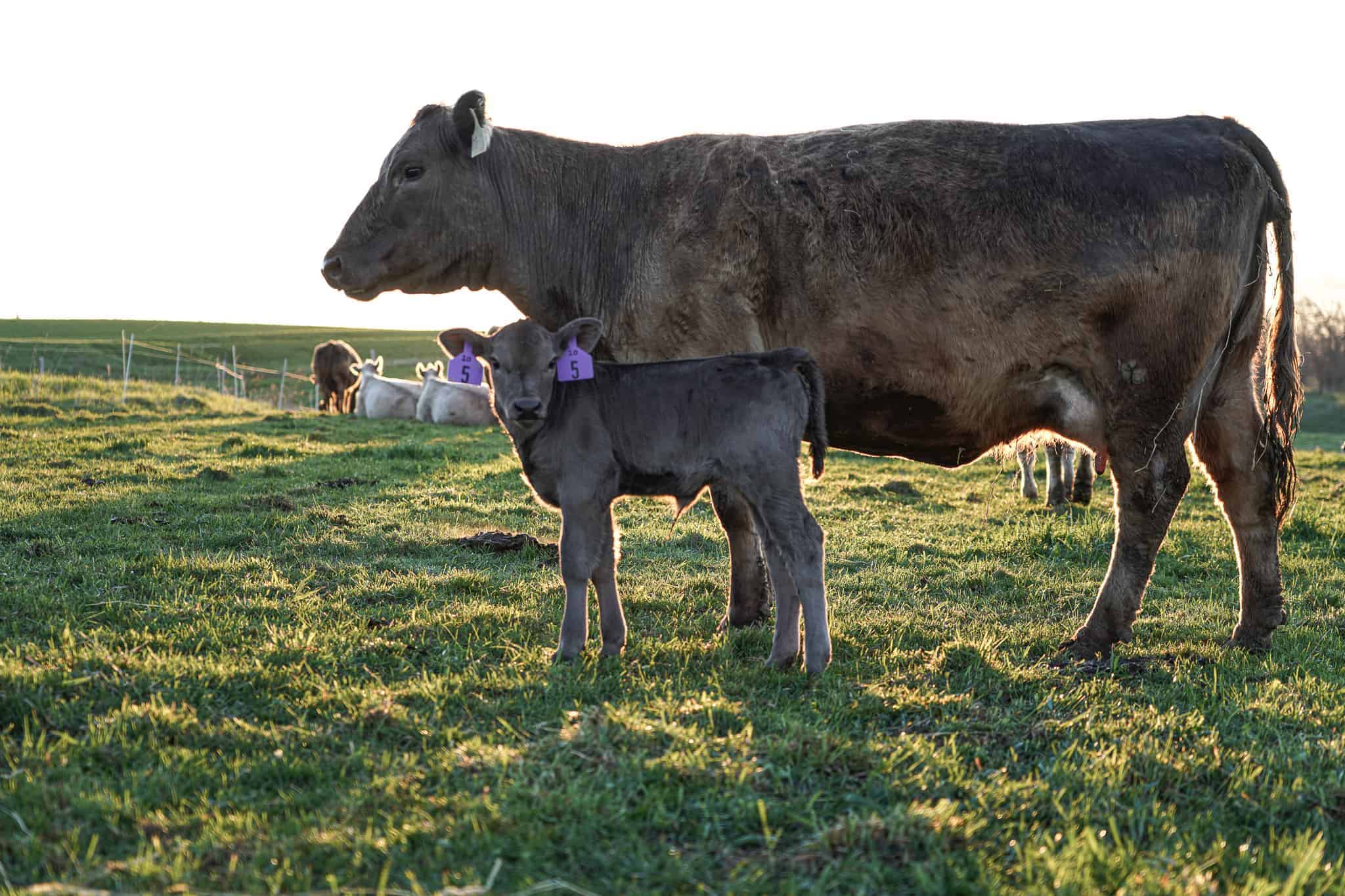
Related Stories

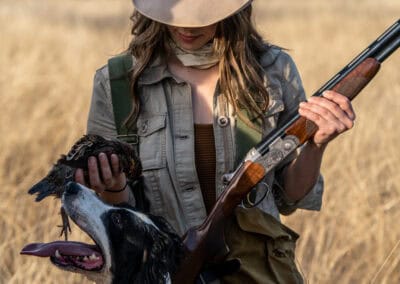

Latest Stories


